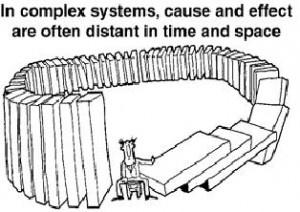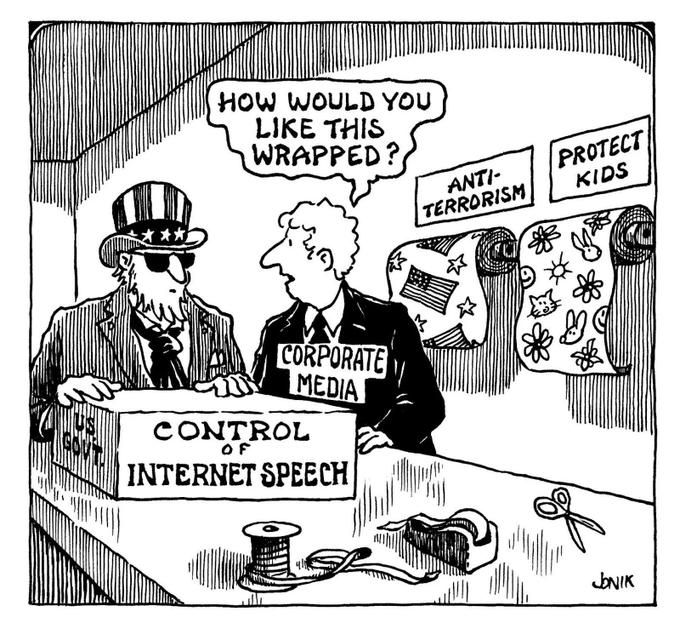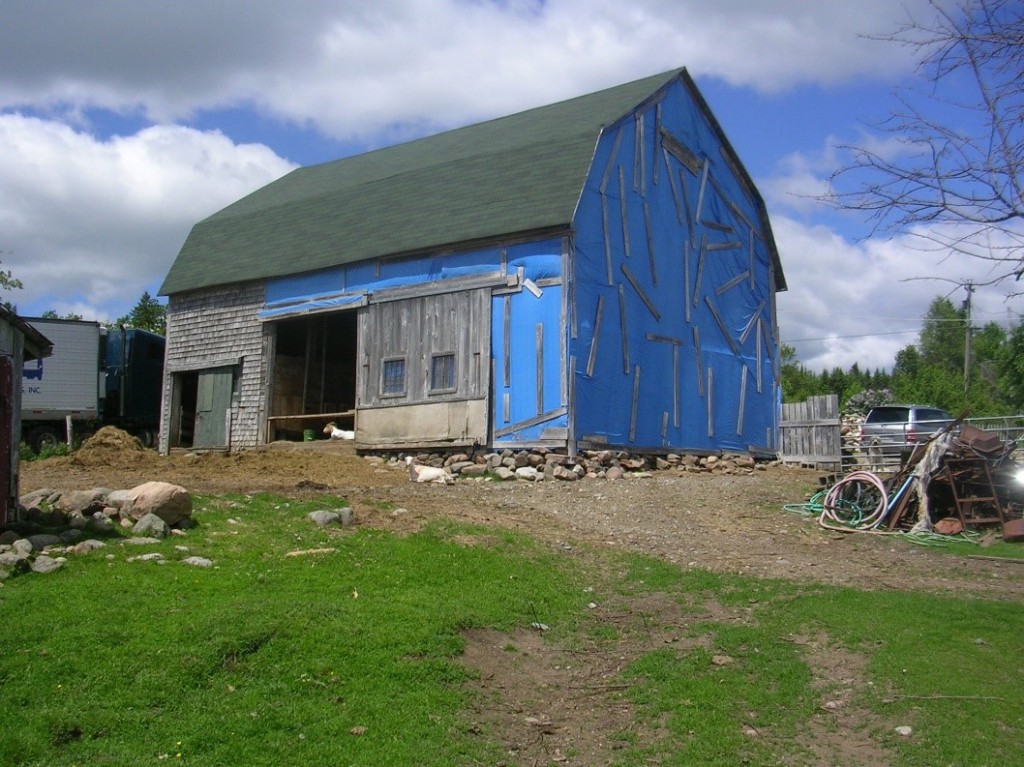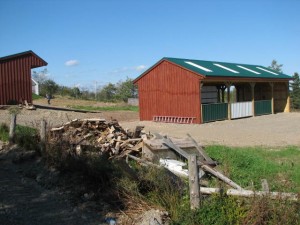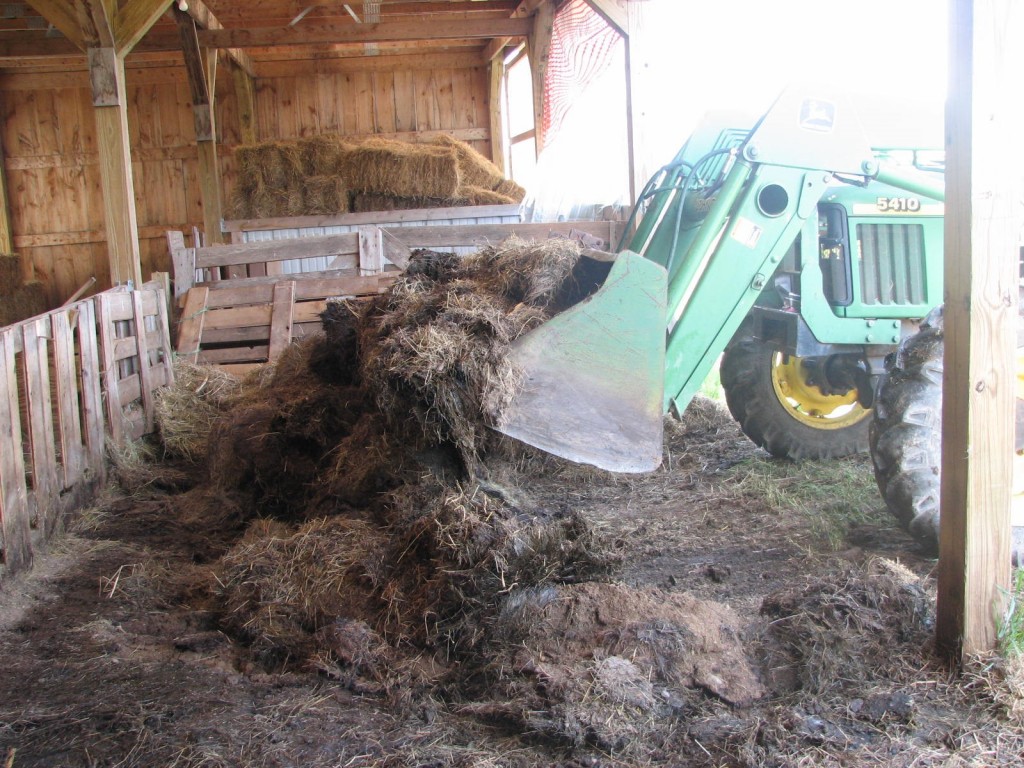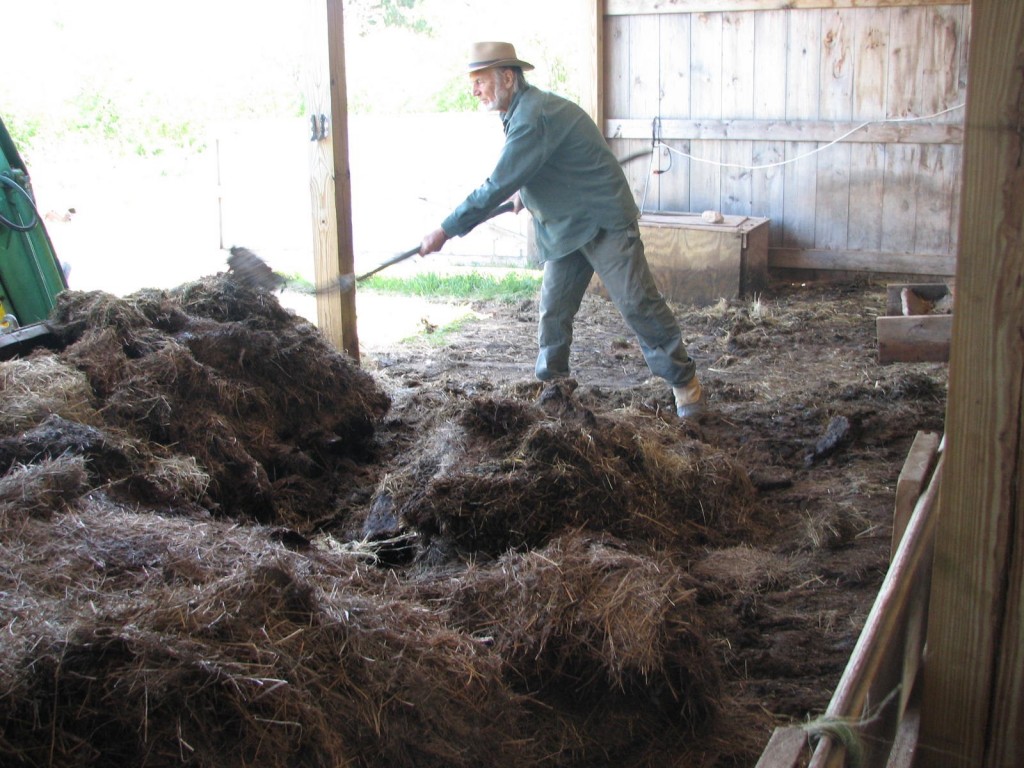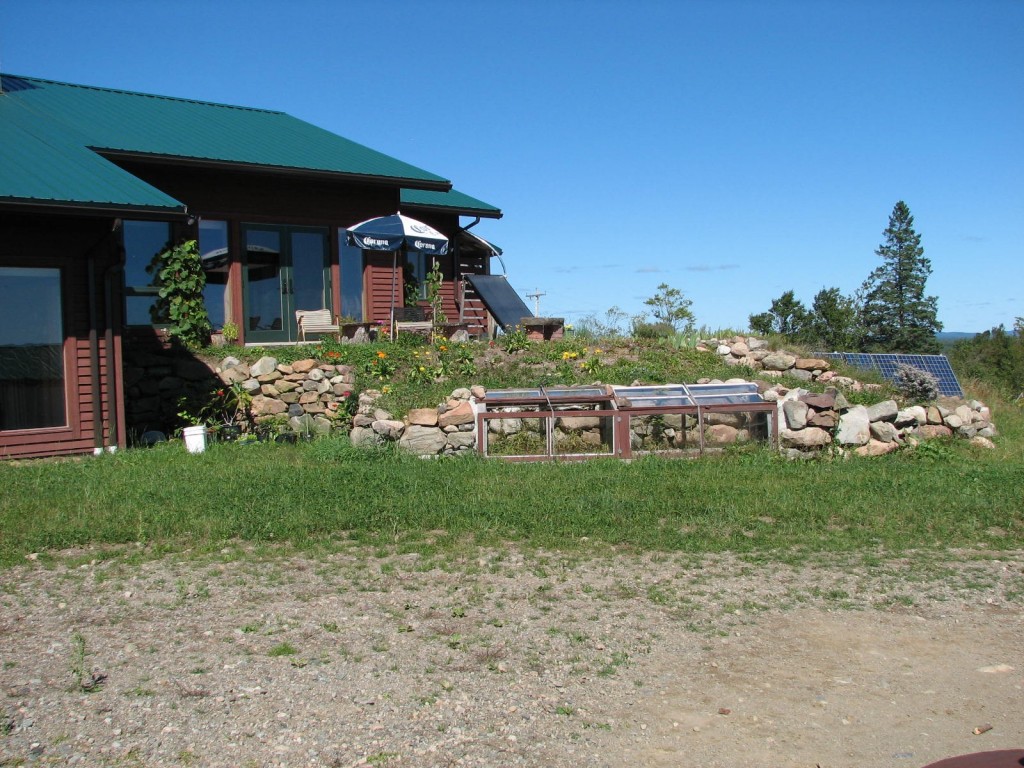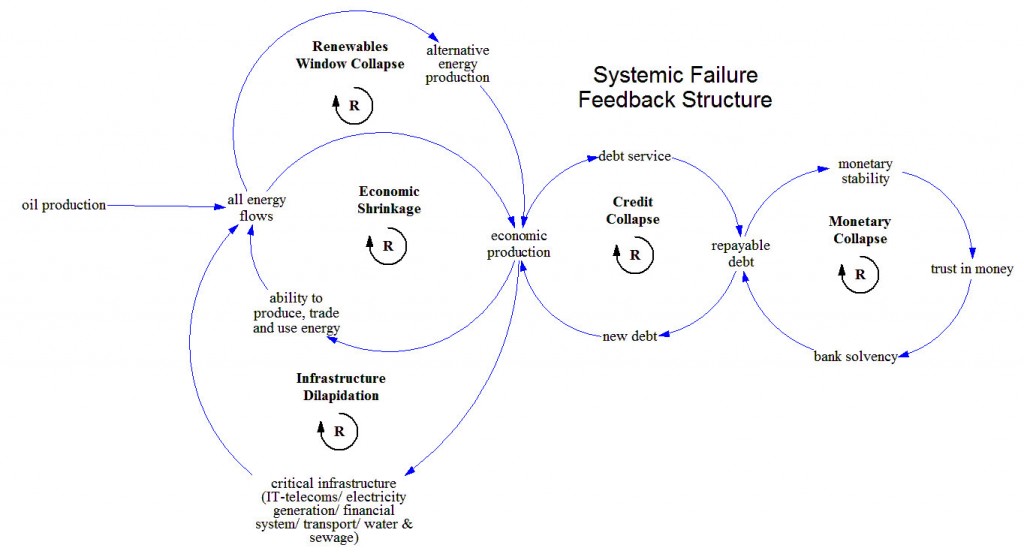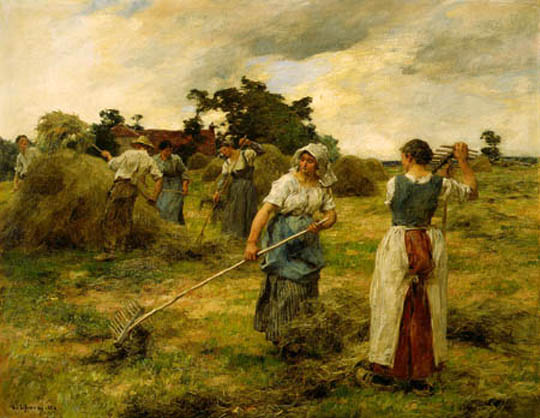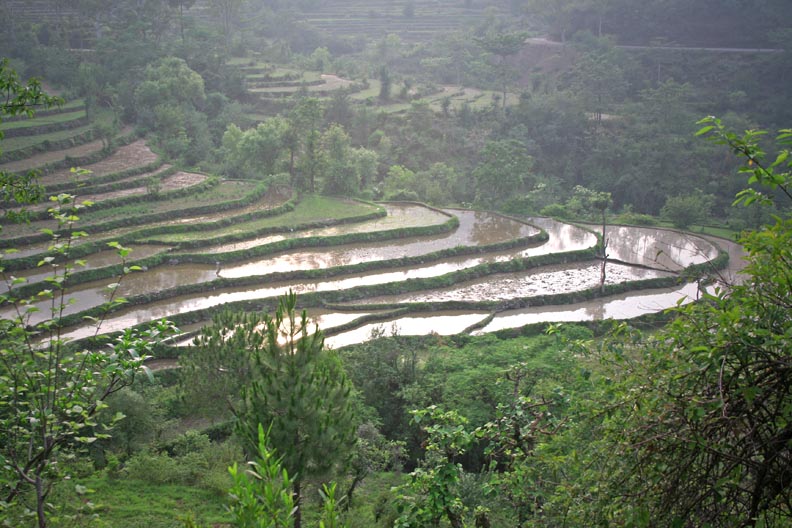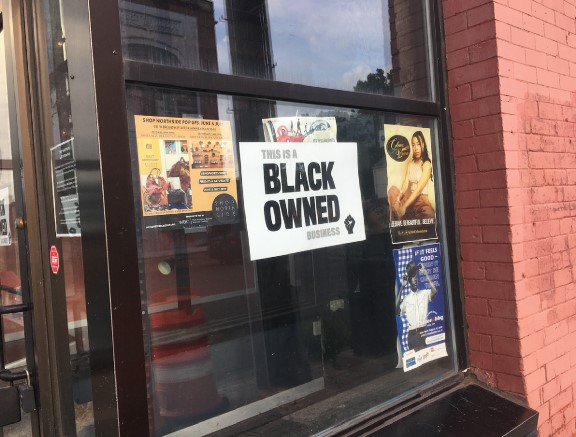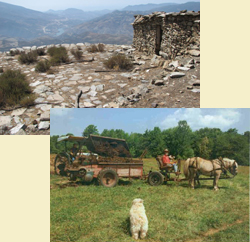More End Games of Modern Civilization: factional fractures in ruling elite policy
By Karl North | December 16, 2021
Historical studies of civilizational collapse reveal a pattern that occurs at some point in the collapse process[1] – ruling elites begin to lose control, and policy disagreements arise. In this essay I will explore evidence that faultlines in pre-existing factions in the US ruling elite, once kept in the background, are emerging into the public view as conflicting policy choices across diverse areas of governance.
First, I will summarize key signposts of collapse and drivers of revolt that have elites concerned to the point of disagreement over policies of social control, as follows:
1. In August 2019, in a financial environment where the prime rate is near zero, the overnight loan rate, essential to keep global dollar transactions flowing, shot up to 10%. To meet this crisis, the Fed had to begin constantly dumping large amounts of new money (actually debt – formerly known as quantitative easing) into the money supply, and has been quietly doing so ever since. This can have only two outcomes. Because the money creation has far outstripped the production of real wealth, debts based on it will ultimately default, crashing the global economy starting in the Western world, the most highly leveraged economy. Or, money creation will eventually cause hyperinflation, thus reducing everyone’s bank account to zero.
2. A looming energy shortage has been forestalled by tight oil production, which temporarily made the US the swing producer and granting some control over oil price. US shale never grossed over $700 billion for about $1 trillion investment, so the nonviability of the industry at an oil price that allows the industrial economy to survive is now evident to ruling elites. The cost of oil has doubled in the last year to over $80/bbl (as of October 2021) despite an already depressed US economy, and will continue upward until it collapses the economy sufficiently to depress demand and price. Price depression will briefly revive the economy slightly, causing another price rise. This fluctuation will continue, each time causing wave of permanent shrinkage in the economy.
3. To meet the looming energy shortage, global elites have played a virus (whether intentionally so designed or not) in a way to shut down parts of the Western economies to bring energy consumption in line with declining production. Despite sharply different policies – say, in Sweden vs UK – the results have been similar across Europe, and apart from some specific complications, the overall death rates from the virus itself not significantly higher than the normal flu season. Hence, the “media pandemic” story is no longer viable (especially in Europe, less among the more submissive US population). The “dangerous new variant story” is not working well, so unless rulers can invent a new disaster, the coming energy shortage and the acceleration of the collapse process will make itself felt in many ways, and the path is clear toward hyperinflation and revolt. In the US, the Democratic Party has been used to weaponize the pandemic narrative to destroy the Trump presidential campaign.
4. “The Great Reset” is a way of getting people ready for hyperinflation that will wipe out current levels of production and consumption. Digital currency makes redenomination of currency easy. It facilitates control of prices and income, replacing lost income with a food stamp type of guaranteed minimum income in what becomes an austere, low-level economy. Combined with the existing surveillance technology, a digital currency paves the way for the roll out of a totalitarian state, which will be necessary to conserve diminishing resources and reallocate them to sustain an affluent elite and their managerial minions .
5. The digital revolution has made people docile and heavily reliant on their smart phones. Cut off the internet, or simply censor its alternate sources of information (as is now occurring), and people are helpless.
In reaction to this situation, ruling elites have split into factions promoting different policies in the following areas: foreign policy, the pandemic story, the use of political parties as a tool of divide-and-rule polarization, and the resource depletion that is bringing industrial civilization to a halt.
Foreign Policy
Suddenly, with the arrival of the Biden administration, signs are appearing that at least one faction of the ruling elites is reconsidering its aggressive foreign policy of hybrid war against Russia. One of the reasons is obviously a matter of domestic politics – the desire to take down the Trump presidency with a range of fraudulent claims linking Trump to Russian influence was no longer necessary. But a potentially more important reason is that hybrid war all along the border of the Russian federation (including its soft Islamic underbelly) has not been working well, and even backfiring. Here are some of its failures:
1. CIA color revolutions in Georgia and Ukraine using political extremists as a spearhead created regimes led by corrupt oligarchs (and in the Ukraine a neo-Nazi police state) who persecuted Russian populations in these former Soviet republics. Those populations declared independence and, with help from Russia, defeated Western supported attempts at reconquest, leaving those states in a mess that is an embarrassment to their Western backers. Attempts at color revolution in Belarus and Venezuela have failed at the outset.
2. The US invasion and occupation under cover of a Western “coalition of the willing” of Afghanistan and Iraq, and Syria, Libya and Somalia using Islamic extremist mercenary proxies, never achieved its goals of imperial control, and left partially destroyed, failing states. The official acknowledgement of defeat in Afghanistan and the ignominious retreat at the eleventh hour is but the latest in a long string of failures that have emboldened nations subject to US imperial control to reassert sovereignty. Another result is Arab hatred of the West that is leading even the medieval monarchies in the region who were reliant on US protection to reconsider that relationship.
3. The rise of a sovereigntist group of oligarchs in Russia led by V. Putin stalled the penetration of Russia by transnational capital that had been partly achieved in the decade of the 1990s. The “sanctions” strategy of economic warfare not only failed, but backfired as Russia seized on the opportunity to rebuild its domestic economy and strengthen its sovereignty. Moreover, Russia’s totally state controlled military industrial complex has achieved technological superiority (at one tenth the cost) over a US one that corruption and private control has reduced to a capitalist cash cow. The result, as the Pentagon admitted in its report to Congress, is that the US can no longer fight a major war.
A number of geopolitical analysts are describing the Putin-Biden summit, leading to a joint statement on strategic stability on June 16th, 2021 as the acknowledgement of the above regional defeats, a new configuration of power in the region, and thus the emergence to predominance of a ‘faction of caution’ (see here, here, here, and here). Thus, according to geopolitical military analyst The Saker,
Yet, what Biden did and said was quite clearly very deliberate and prepared. This is not the case of a senile President losing his focus and just spewing (defeatist) nonsense. Therefore, we must conclude that there are also those in the current US (real) power configuration who decided that Biden must follow a new, different, course or, at the very least, change rhetoric. I don’t know who/what this segment of the US power configuration is, but I submit that something has happened which forced at least a part of the US ruling class to decide that Obama’s war on Russia had failed and that a different approach was needed. At least that is the optimistic view.
Hence the request of a face-saving summit served to acknowledge all this and back off, at least for a while.
However, many continuing US contradictory words and actions against Russia and its geopolitical interests reveal that the faction fight inside transnational ruling elites is not in remission. Why did Biden personally attack the Russian president just before the summit, if he truly wanted more stable relations? Why the provocation of sending a warship into Russian waters off Crimea? Why two new US air strikes in Syria and Iraq recently – acts of war according to international law? Why did the deep state’s attack dogs in the US mainstream media denounce Biden’s diplomatic change of tone in the summit? International investigative journalist Maram Susli has revealed $350 million in Pentagon contracts to US companies to buy Eastern European made weapons, which cannot be used by US troops, just as PBS Frontline brought Al Qaeda terrorist head Al-Joulani on its show to give him a makeover as leader of the “good guys”. Is this all just for domestic consumption as The Saker suggests, or is it evidence of the hegemonist faction angling to retain skin in the game? Obedient to their deep state coaches, many in the mass media have crucified the Biden administration for the decision to end the war and occupation of Afghanistan. Now even Democratic Party leaders are calling for a package of sweeping new sanctions against Russia that undermines the spirit of improving relations that Biden attempted at the Geneva summit with Putin.
On the other hand, the US appears to have given up completely on its Ukraine color revolution, which has become a Nazi-occupied economic and political disaster. The coup de grace was to dump the Ukrainian debacle on Germany in a deal that included some vague German commitments to Ukrainian reconstruction.
Finally, a multitude of domestic crises and an increasingly polarized and contentious domestic population may be shifting Washington’s attention away from foreign hegemonist programs to suppression of domestic revolt.
Extreme polarization of party politics
For millennia, elites have successfully used the strategy of divide-and-rule to control their societies. In the modern age Western elites have accomplished this by creating a stage show they call “democracy” in which different political parties compete for the allegiance of the electorate with programs claiming to serve the public interest, but which rarely stop them from serving the interests of the ruling class, which is the main function of government.
In the US today, ruling elites seeking to divert attention from their role in collapse have encouraged the two parties to engage in such extreme measures against each other that they are gradually discrediting themselves into political impotence. One might ask: What good is a stage show that no longer fools anyone? In any case, the occasion for this more radical strategy was the appearance of a loose cannon presidential candidate, one who recognized that he could win by voicing verities and countering official narratives in a way that no president had done since John F. Kennedy:
- He denounced the serial wars, so lucrative to a corrupt military industrial complex and its investors, as failures that served no national security purpose, and called for the repatriation of the troops.
- He called for Europeans to shoulder the costs of NATO, the cover for US military occupation of its Western European vassal nations, which in effect questioned its very purpose.
- He denounced the progressive deindustrialization that ruling elites had carried out by moving their investment to cheap labor regions of the world, leaving impoverished a large population that became known as “the former middle class”, and called for a return of the nation to industrial greatness.
Deep state agents of the ruling class easily prevented the politically inexperienced president from achieving any of his program, but the rhetorical damage he caused to the official narrative endangered the social order and had to be neutralized. The chosen instruments were the Democratic Party, which in an election year was happy to oblige, in alliance with a corporate controlled mass media that gave up any pretense of journalistic integrity. Assisted by agents of the deep state, these institutions launched a campaign to destroy an elected sitting president by any means, however fraudulent and even treasonous, as it turned out.
What ensued? First, a campaign of identity politics starring BLM/Antifa attacks on police in cities across the nation, weaponized by corporate funds and supported by Dem Party mayors and governors, causing violence that destroyed whole neighborhoods, which the mass media called “peaceful demonstrations”.
The second part of the campaign to neutralize the Trump administration, again embraced by the Democratic Party, was an attempt to link it to alleged Russian interference in US politics, now exposed as fraudulent and involving the intel establishment and the FBI in criminal activity.
The third part of the campaign was to elevate a manageable virus into a purported pandemic, again heartily embraced by the Democratic Party. The official pandemic narrative, long subjected to massive protest in Europe, is now unravelling even in the US, further discrediting the Democratic Party.
The results?
- A demoralized and dysfunctional police leading to growing crime across the nation.
- A further discrediting of the Democratic Party among lower income populations whose neighborhoods were trashed by BLM/Antifa violence, and whose livelihood suffered under pandemic lockdown policies.
- A mass media who achieved further discredit to itself by dismissing all who objected to the campaign of violence as white male supremacists, by constantly broadcasting false Covid 19 case and fatality counts, and by suppressing and denouncing virus treatments proven to reduce the disease to below pandemic status.
- A campaign to censor free speech, orchestrated by Silicon Valley billionaires, in one of the few places it still exists – on the internet.
The above list is far from complete, but must give pause to ruling elites as they see the very institutions, they count on to maintain the social order losing credibility and traction.
Revolt against the pandemic story and its lockdown agenda
Thousands of courageous medical professionals around the world[2] have united in organizations to expose the lies in the Covid narrative, as follows:
1. All the cheap therapies banned by authorities in the West and especially in the US, but used effectively in thirty other countries[3] have been proven to prevent or reduce the disease to a situation far less perilous than a pandemic, when used in a timely fashion. Despite the lies from the authorities and media, the therapies are completely safe and have been used effectively on many health problems for many decades. Used as both a preventive and a therapy in various cocktails, these cheap treatments almost eliminate the need for hospitalization in the very small at-risk population that can get sick from infection.
2. This virus does not, and did not cause a pandemic. Deliberate exaggeration of case counts using a test that as used in many countries according to WHO instructions generates at least 50% false positives. Although the test cannot diagnose disease, medical authorities such as Johns Hopkins are feeding the results to the media as counts of cases of Covid 19 disease. These greatly inflated case counts are used to scare and deceive the public. Moreover, fatality counts are rigged to count deaths by all sorts of causes. Most people under seventy infected or not, do not get sick, or get an easily treated mild version. Medical authorities like Fauci, CDC, NIH and WHO quietly admit that fatalities are no greater than the annual flu season, contradicting the scare message that they are trumpeting to the media. The official suppression of effective treatments and a media campaign to falsely claim that a vaccine is the only solution did cause a medical crisis, mainly in countries like the US with a large low-income at-risk population who get poor health care. NYC with its large population of inner-city poor thus becomes a hot spot, magnified in the media to scare the whole nation. These hot spot crises occur every year in the flu season due to poor health care systems.
3. In these ways authorities have stampeded the public into accepting draconian lockdown policies that are not only unnecessary but cause more suffering than the virus. Most of the lockdown policies have proven not only ineffective, but are not necessary, given all of the above. The collateral damage of the lockdown policies has caused more suffering than the virus.
4. The so-called vaccine available in the West is not a vaccine, it is a gene therapy. A long string of US patents over twenty years reveals the creation, mostly in US research laboratories, of a genetically engineered virus, not a natural mutation of a virus from an animal like a bat or a pangolin. In tandem with this virus, patents divulge the creation of a customized designer “vaccine”, This experimental, high-risk product that authorities and media are trying to scare everyone into injecting is totally unnecessary, given all of the above revelations. Moreover, the injection is producing adverse events that are orders of magnitude above those of any previous vaccine. Peer reviewed studies of its use in highly injected populations like Israel and the United Kingdom disclose a pattern of recurrence of the disease among the injected, which shows 1) that it was never designed to confer immunity, unlike a real vaccination, and 2) that booster shots don’t provide immunity either.
The above-described revelations are percolating into the collective consciousness, especially in Europe, despite almost complete suppression in the corporate media, censorship in the alternate online media and harsh condemnation of critics of the official “pandemic” narrative. In the US, the pandemic story has lost more credibility in politically conservative populations, partly because liberals politicized the issue by embracing the official narrative aggressively as a way to destroy the Trump administration. Attempts by authorities to pressure people into accepting injections, and stigmatizing the “unvaxxed” and punishing them with “vaccine passport” requirements have sparked references to parallels with the classification in Nazi Germany of a whole class of society as subhuman “Untermenschen”, and polarized society further.
As awareness spread of the false rationale for most of the elements of the lockdown policies, authorities began flipflopping in their support for the most unpopular, such as mask wearing, keeping social distance, and quarantining school children at home, thus suggesting a split in the ruling elites as to how to continue the “pandemic” as a scare campaign. The New York Times, after spreading the “pandemic of fear”[4] official policy narrative as certainties for over a year, is now running cover stories such as “Covid is a Mystery”, admitting sotto voce that most of those certainties may be untrue. The WHO has now admitted that its directive to use the PCR test – which became the tool for the scare campaign – was a mistake. The profit motives of the vaccine industry require fear mongering, but some authorities may be regarding the growing polarization and revolt as self-defeating. The Democratic Party and most political liberals, having embraced the pandemic story now unravelling as mass deception and lockdown policies now exposed as ineffective, are now saddled with a failing fear campaign.
Hence, as the fall 2021 college football season heats up, evidence appears among the young that the Covid scare story is unravelling in places and holding strong in others. In schools around the country, especially big ten schools, lockdown protocols are lax and stadiums are packed with maskless fans. In others, like SUNY Binghamton for example, injection is the rule if you want to go to school, and masks are required in classrooms. This is evidence in the college generation of how polarized and politicized the pandemic narrative has become. The fact that deep state controlled mass media like the New York Times are reporting on the mounting opposition to lockdown protocols suggests concern in at least some quarters of the ruling class that the Covid gambit may have been overplayed and that political polarization is getting out of hand..
Resource Depletion
Underlying all the convergent crises and attempted solutions already discussed is global resource depletion and its symptom – the long-term growth in the cost of everything as long as business continues as usual. Hence, elites are planning degrowth for us that preserves growth and prosperity for them. Evidence that at least one faction of transnational capital and national ruling elites realize the implications of inevitable degrowth and the need for an elite-orchestrated version is the “Great reset” narratives promoted in Davos meetings of the World Economic Forum. These narratives hide technocratic totalitarian degrowth plans behind propaganda that promotes the ‘reset’ as green and socially just. So far, this propaganda is aimed at political liberals who have tended to accept the totalitarian aspects as a necessary ‘war economy’. Conservatives, suspicious of anything promoted as liberal, are actually more sensitive to the ‘big government’/fascist nature of elite plans.
[1] See Dmitry Orlov’s Five Stages of Collapse
[2] https://covid19criticalcare.com/covid-19-protocols/math-plus-protocol/
https://covid19criticalcare.com/covid-19-protocols/i-mask-plus-protocol/
German Corona Investigative Committee
[3] https://americasfrontlinedoctors.org/
[4] https://de.rt.com/international/128471-yale-epidemiologe-corona-krise-ist-von-behoerden-erzeugte-pandemie-der-angst/
Topics: Political and Economic Organization, Social Futures, Peak Oil, Relocalization, Uncategorized | No Comments » |
Who’s Afraid of the Great Reset?
By Karl North | November 6, 2021
In a recent piece I said, “Great Reset narratives reveal that transnational capital and national ruling elites realize the implications of degrowth. Hence, they are planning degrowth for us that preserves growth and prosperity for them.” Because their agenda calls for a major systemic shift in resource allocation, a centralized digital currency and other draconian policies that will be obvious to everyone, I see a number of reasons why such attempts could fail.
The limits of managing complexity
From the beginning of the scientific age in the 17th century, scientists found that achieving predictable results of experiments in the real world was impossible because the variable they wished to understand is usually emmeshed in a complex of causal relations.
So, they retreated to laboratory conditions where they could reduce the variables in play to manageable few. When even minor changes in complex systems like global society yield inevitable unexpected consequences (for example the many fizzled CIA-orchestrated color revolutions), major ones are likely to spin out of control in many directions. This is the predicament that attempts at systemic-level change agendas like The Great Reset plan cannot avoid.
False flags no longer work
As for the false flag scare campaigns they need to compel submission to a top-down system revolution, elites have worn out their usual options. The Mideast wars were profitable, but never popular, and the Islamic threat is less likely to work a second time.
The pandemic narrative did scare a lot of people into blind obedience because the threat it fabricated was a domestic one, but daily experience with “the virus” and its “solutions” is gradually exposing the lies of the official pandemic narrative. Like your three-week old bottle of milk, the covid campaign of fear and tyranny has passed its sell-by date, which its creators may not have thought through. People are beginning to smell a rat, or simply get tired of all the social shackles. Accelerating the unraveling of the official pandemic narrative are two powerful videos, Plandemic Part 1, the most viewed and banned documentary of all time, featuring Dr. Judith A. Mikovits, one of the leading medical professionals who are fighting back against the official covid narrative, and Plandemic 2/Indoctornation, with David Martin, a leading investigator of corruption in high places, which thoroughly documents the criminality that the covid phenomenon has exposed in the medical industrial establishment.[1]
China bashing is all noise
Constantly amplifying Washington imperial propaganda for years, the mass media have built up a reservoir of hostility toward China and Russia. But the latter, having great success simply waiting as the West self-destructs, are content to be patient and roll with the rhetorical punches and sabre rattling thrown their way. After years of failure to provoke aggressive behavior from Russia and China, the threat of foreign aggression is wearing thin in the Western world. And the US military is in such bad shape (as its high command is well aware) that a US attack on the sovereign territory of these nuclear powers is out of the question.
The clock is ticking
It may be too late for an elaborate reset plan to succeed. Several simultaneous deepening crises are each reinforcing the others and reaching tipping points in a global economy that unrestrained profit-seeking has pushed to the limits of fragility. The money printing and debt financing that is artificially keeping the system going has reached an end point where its ultimate negative consequences are now appearing. Meanwhile the economic damage that the covid caper created is still unfolding. Oil geologists say that the world is close to the point where energy production can no longer keep up with consumption; hence, the economic drag of resource depletion is becoming so visible that it cannot be ignored. The combined effect on domestic economic security – inflation, unemployment and supply chain failures – is building social unrest within nation states: waves of strikes and sick-outs, regular demonstrations in Europe against tyrannical policies, signs of sectoral and local rejection of central government policies, and individuals simply opting out of the system.
The explosion of counter narratives
Over the last few decades, the US mass media have been consolidated into a pyramid controlled from the top by a small cartel of corporations like CNN and NBC, themselves controlled by a few global investment corporations like Blackrock and Vanguard.[2] Because of monopoly control, different media could no longer scoop each other with the results of investigative journalism; thus the media cartel was able to deliver the same narrative throughout the media pyramid – a set of daily messages whose content serves the political interests of its class owners in the transnational elite. And from the beginning of the digital age, the dominant internet media platforms like Facebook and YouTube have been under monopoly control of digital technology billionaires.
However, growing awareness that the mass media is openly serving the political propaganda interests of its owners has discredited it as a source of reliable news, and stimulated a search for independent sources. On the internet, the growth of economical alternative media platforms to replace the Silicon Valley monopolies is rapidly spreading independent information sources and narratives that are eroding the credibility of all major societal institutions and their policies, not just mass media.[3] And the elites cannot easily shut down the internet – their power and profits depend on its existence.
In sum, any grandiose system restructuring that transnational elites are trying will likely be complicated by uncontrollable unrest within nation states. Short of declaring global dictatorship, what is a desperate ruling elite to do?
[1] https://sovren.media/video/plandemic-part-1-20.html
https://plandemicseries.com/plandemic-english-subtitles/
[2] See the well documented video documentary Monopoly: Who Owns the World
https://rumble.com/vmyx1n-monopoly-who-owns-the-world-documentary-by-tim-gielen.html
[3] Examples are https://www.peakprosperity.com/ and https://titaniclifeboatacademy.org/
Topics: Political and Economic Organization, Social Futures, Peak Oil, Relocalization, Uncategorized | No Comments » |
What props up the delusion of growth paradigm?
By Karl North | September 19, 2021
The general trend in the global economy has been toward lower growth and productivity in the last half century. This trend is easily explained in biophysical economics as due to 1) increasing scarcity of finite resources due to depletion, itself the result of massive consumption in the modern age, and 2) erosion of carrying capacity due to many types of ecological damage from the era of massive consumption of natural resources. Conventional economists have nothing in their economic worldview to explain the trend, so they hide their failure with jargon words like ‘stagflation’ or ‘secular stagnation’, which don’t explain anything.
Faced with a trend, critical to the future of industrial society, that they cannot explain, economists have offered solutions that naturally don’t work, but appear to perpetuate growth by artificial means. A solid literature has developed to expose these solutions as illusory. This essay will summarize some of its conclusions, which may be particularly useful to those who may have been inclined to believe the illusions propagated by governments and the mass media.
Debt-based growth
Money printing, hiding under labels like bailouts of too-big-to-fail central banks and quantitative easing, which started with the financial crisis of 2008, accelerated recently as a policy response of a fabricated “pandemic”[1]. The policy response did habituate the public to house arrest under false pretenses and other violations of the Bill of Rights.
But money printing produced little growth in the US except briefly in economically nonviable enterprises like extraction of unconventional oil, or in the weapons economy where a decades-long fear campaign has sustained a bloated defense budget while driving the US government deeper into debt. Otherwise, the main effect has been to create dangerous bubbles in the rentier economy (an oxymoron), which consists primarily of the stock market, including speculative markets like currency and derivatives, and real estate. This process will continue until an inevitable crash brings about a new era of austerity.
Rigged statistics
Key government statistics like unemployment, inflation and gross domestic production (GDP) that mass media have taught the public to rely on as measures of the health of the economy have been defined in a way that deceives. This deception has been exposed in efforts like Shadowstats that have revealed unemployment and inflation that is relevant to the prosperity of most people to be 2-5 times greater than in government statistics. GDP includes bubble “production” in the rentier economy and derivatives, none of which measure growth in real wealth. Thus, GDP is useful to the investor class but has misled the public as an assessment of most people’s standard of living despite how it is represented in the mass media and government. The success of rigged statistics is declining along with credibility in all mainstream institutions.
Energy alternatives
Along with many others, elsewhere[2] I have argued the impossibility of building energy alternatives to a scale that would support an industrial society. However, to summarize:
- The energy return on energy invested (EROEI) of alternatives is too low to sustain industrial economies.
- Even if it were possible to significantly replace fossil fuels with other energy sources, that would perpetuate the industrial economy and its resource depletion, eventually bringing down the industrial economy.
- The cost of conversion of the economy and infrastructure to new sources of energy itself entails sacrifices that 1) the global economy in its present decline can no longer afford, and 2) that already impoverished masses could not survive.
For now, the official narrative of endless growth continues to persuade most of the public that some sort of energy will be available to sustain industrial society. Different subnarratives are promoted according to political persuasion. Liberals have been induced see planetary overshoot mostly in terms of climate change, and so tend to support energy alternatives. Conservatives have been convinced to distrust government plans, and so tend to count on private enterprise to deliver more oil. Some Western transnational elites appear to understand the resource depletion problem, hence are promoting a “great reset” (see a discussion of this phenomenon below).
Technocratic solutions
“Great reset” narratives reveal that transnational capital and national ruling elites realize the implications of degrowth. Hence, they are planning degrowth for us that preserves growth and prosperity for them. These narratives hide technocratic totalitarian degrowth plans behind propaganda that promotes the ‘reset’ as green and socially just. So far, this propaganda is aimed at political liberals who have tended to accept the totalitarian aspects as a necessary ‘war economy’. Conservatives, suspicious of anything promoted as liberal, are actually more sensitive to the ‘big government’/fascist nature of elite plans.
Conclusion
At this juncture, some stories of the official narrative are becoming increasingly discredited in some quarters of society, while the delusions are holding well in others. And original delusions are often replaced by equally illusory subnarratives. It should be remembered that the core narrative that veils the concentration of wealth and power in a transnational financial elite has penetrated Western culture for over a century, passed down from one generation to the next, and is therefore deeply embedded. At this point it is therefore an open question when the dominant social order will crumble, and what will replace it.
[1] https://www.unz.com/proberts/how-the-covid-pandemic-was-orchestrated/
[2] Energy and Sustainability in Late Modern Society (http://karlnorth.com/?p=1244)
Topics: Political and Economic Organization, Recent Additions, Social Futures, Peak Oil, Relocalization, Uncategorized | No Comments » |
End Games of Modern Civilization: false flag scare strategies and global cultural revolutions
By Karl North | May 10, 2021
Those who do not learn from history are doomed to repeat it… – Santayana
…First as tragedy, then as farce. – Karl Marx
Modern civilization is an interactive and interdependent whole that ties together, however loosely, specific energy drivers, technologies, physical and social structures, ways of living and cultural beliefs and values. Elements distinctive of this whole are fossil energy sources, energy intensive technologies, large urban centers that feed on rural peripheries, global political economies, a reductionist way of knowing and related worldview and belief/value systems. As this whole begins to disappear and be replaced by other forms of civilization, those who hope to navigate this process need the holistic perspective to identify its end games and how to circumvent them.[1] This essay will describe key end games currently in progress, their interdependency and trajectory.
Because things in a whole hang together, most everything in modern civilization, because it is driven ultimately by energy and natural resource depletion, is entering or will enter an end game, although in local variations at different times, places and rates. For most people, the reigning worldview of endless resources and growth will obscure the dead-end nature of these processes until late in the game.
The Marxian caution to view the present as history appears to gain the least traction in the US. Here, history tends to reduce in the collective consciousness to what happened last week. No amount of exposé of last week’s bundle of lies in the corporate controlled media seems to cure Americans of the habit of acceptance of this week’s media stories as depictions of the real world. With that understanding, some of the end games and their historical antecedents recounted below may come as less of a surprise.
Resources
Oil is essential to run an industrial economy because it has functions – as in transportation – that are not replaceable with other energy sources in an affordable way. Momentarily, the use of cheap credit to spawn economically nonviable tight oil production in North America has disguised the decline of most planetary oil production. That “fracking” and tar sands game is now ending.
Reliance falls mistakenly on alternatives – primarily nuclear power and wind and solar electricity. These alternatives are launched with great fanfare but will run aground eventually for several reasons. First, they are too energy intensive, making their net energy delivery too low to sustain Western industrial economies, which are themselves already in decline due to rising resource scarcity. Leading attempts at wind and solar in Europe have already stalled. Full energy cost accounting has revealed almost no net energy, again far too low to sustain those industrial economies.[2] Nuclear power, to avoid rapid depletion of its raw material sources, must use a technology that recycles its fuel in a breeder reactor system. Russia, the leading developer, has yet to achieve a commercially viable complete recycling system. Other efforts, notably in France and the US, have failed and been abandoned. Second, all of these alternative energy sources require the existence of the full panoply of functions of industrial economies, which are going away. Third, they contribute to catabolic collapse: any significant investment and build out of these energy sources and the costly conversion of whole economic systems to use them will massively consume and deplete the energy and raw materials on which modern civilization depends to survive. So, the end result of such efforts solves nothing, but actually accelerates the decline.
The fate of globalism: the economy
Both the global economy and attempts at global governance are costly luxuries of the fossil fuel age, and are thus entering an end game. Early in the oil age, transport costs centered industry around sources of energy, raw materials and cheap water transportation – in the upper Mississippi valley in the US, for example, or the Ruhr/Rhine region of Europe. In today’s global economy, an era of cheap energy and international capital’s incessant drive to maximize profits have allowed it to scatter the many parts of industrial production – from resource extraction to component production to final assembly and retail markets – to wherever in the world profits are greatest. The result – the progressive deindustrialization and impoverishment of the mature industrial societies of US, Western Europe and Japan – is destabilizing those societies. As the general public in these societies begins to realize that the transnational capitalist class always put its class interest ahead of theirs, revolts are developing in many nations to take back sovereignty in its several forms – political, economic, ethnic and control of natural resources.
Today, as the end of the oil age causes resource costs to permanently rise, it is weakening supply chains and economies of scale, thus shrinking the global economy in a snowballing process of decomplexification. The resultant combination of rising inflation at the same time as national economies are shrinking is causing demand destruction, starting with the discretionary sectors of mature industrial societies, which contracts employment and economic activity further in a reinforcing feedback loop, thus aggravating social unrest.
The fate of globalism: governance
For over a century, governance and social control in the Western world has been achieved largely via mind control. Ruling classes have used their control of major institutions – governments, mass media and the knowledge industry – to manipulate information the public receives. In the US, for example, these institutions deliver a constant narrative of how the world works, doctored to serve ruling class interests. This narrative has been highly successful, so that consequently most Americans entertain a view of their society and the world that resembles a Never-neverland of heroic Peter Pans, evil pirates, and Tinkerbell fairy tales. Elite control of the mass media has relegated serious critical analysis of its established narratives to the margins of the information business.
However, in these times of instability and economic decline, ruling elites encounter increasing problems of governance and even social control. To obtain public support for their harsh agendas, they have resorted to violent measures camouflaged in false flags, outright fabrications and cover stories.
Most of the public is naturally averse to war, but ruling elites often need wars to expand imperial hegemony. Also, they foment wars because the inevitable rapid turnover in product demand and the common practice of selling weapons to both combatants makes the war industry one of the most lucrative sectors of an economy. Hence, a pattern of false flag type deceptions has occurred to scare publics and stampede them into acceptance of war policies.
The first of these in my life (I was three at the time) occurred when the US high command learned that a Japanese naval fleet was en route to attack the US fleet in Pearl Harbor. Keeping the US military command in Hawaii in the dark, and Pearl Harbor therefore undefended, they allowed the Japanese attack to proceed, destroying much of the US Pacific fleet and personnel. This US-engineered catastrophe (and mass murder) achieved the expected result – public support for the declaration of war against Japan.
When Americans elected a president in 1960 who intended to end the war in Vietnam and refused to back a CIA-orchestrated invasion of Cuba, he was assassinated, an inside job revealed in a massive investigative literature, while a patsy who was a CIA asset was fingered in the cover story to take the fall.
The pattern continued with the Tonkin Gulf story, a fabrication that justified the full-fledged entry of the US into the Indochina wars in the 1960s, and in 2001 with the demolition of three sky scrapers in NYC Trade Tower complex, a crime of mass murder never subjected to a normal official investigation of evidence. Exposed later in a vast literature as an inside job, it was immediately blamed on Arabs in a prepared cover story fed to the mainstream media, and used to justify a US hegemonist agenda, labeled the “war on terror” for domestic consumption, of invading seven countries in five years, most of which wars occurred or are still in progress.
As the “war on terror story” unraveled and began to lose its scare value, elites have resorted to keep Americans fearful and submissive by fabricating domestic terror events, which in reality never happened. The Sandy Hook “school shooting” the “Boston marathon massacre” the Las Vegas hotel “shooting”, the Charlottesville “white supremacist attacks” and others designed to cow Europeans into submission , have all been exposed by meticulous private investigators as fitting this pattern.[3]
The current solution of the international capitalist class to the deepening crisis of control of the revolting masses is a global cultural revolution consisting of a grab bag of racial justice and green new deal programs. These are combined with the ‘Re-set’ – the replacement of a withering manufacturing base by automation, and high-tech digitalization of everyday life – the cashless, cardless economy, automated social credit scoring and the complete disappearance of private property for the masses (but saved for the elites). All this is being combined with more submissiveness-building false flag scare campaigns like the annual Corona infectious respiratory disease wave magnified into a “pandemic”, to justify a “lockdown” (a term for a weapon used to quell prison unrest) of whole societies, to habituate Western civilization to ever-increasing poverty and the eventual demise of modern industrial society.
At the same time, big tech and big business are using their control of increasingly digital media platforms to first create a culture war that pits identity groups against each other and thus atomizes the working classes, thwarting any chance to unify and resist the class warfare of the rich. Then they block all criticism, now mostly relegated to the internet, from reaching the public by deplatforming dissenters from the official narrative. In the US the culture war has worked as designed: it has generated an emotionally driven hysterical liberalism that begets pseudo-revolutionaries à la BLM/Antifa, and is reminiscent of the crazed liberal ferment turned nihilist in pre-revolutionary Russia that Dostoyevsky described so well in his novel, The Possessed. One recent commentator expressed it thus:
The “woke” are tools to fracture nations, a people, patriotism, social norms, families, morality, the future & anything which could possibly hinder the progress of the 600 odd (multi-billionaire) families who rule this planet.
Culture wars tend to get out of control, as Mao Tse Tung discovered in 1976. Witness the absurdity of “liberals” incited in a year-long rant by the Democratic Party hierarchy and the mainstream media in concert, to instigate violence all across Dem Party controlled states and cities last year (2020), while constantly accusing “deplorables” of white supremacist violence that is strangely nonexistent to date. To make up for that, liberals have fabricated a “white supremacist insurrection” out of a symbolic occupation of the Capitol in protest of an election, of which many such Capitol protest occupations have occurred over the years without anyone attacking them as an insurrection. How long can the absurdity of this blatantly elite-orchestrated campaign of polarization last before the social fabric gives way? What will elites do then?
[1] Examples of this holistic perspective on modern civilization are few. One is Ruben Nelson’s works, such as Exploring Civilization Overshoot or Civilizational Paradigm Change: The Modern Industrial Case
[2] Tilting at Windmills, Spain’s disastrous attempt to replace fossil fuels with Solar PV, Part 1
Germany’s renewable energy program, Energiewende, is a big, expensive failure
[3] James Fetzer has been a heavy lifter in this area, mainly for identifying highly scientific contributions from experts in fields relevant to the investigations, and bringing them together in a compelling narrative. In the now mature area of JFK assassination studies, his work has been especially useful. Once he turned to these endeavors, officialdom quickly denounced him as the kook professor (never mind his summa cum laude diploma from Princeton and an established reputation for contributions to the methodology and philosophy of science).
Topics: Political and Economic Organization, Social Futures, Peak Oil, Relocalization, Uncategorized | No Comments » |
Polarization in crisis: Nazi Germany and US today
By Karl North | March 3, 2021
Anna Segher’s short stories and especially her novel of political imprisonment and escape, The Seventh Cross, explore a progressive fracture of German society in the 1930s caused by the rise of the Nazi party. Reading her painstaking descriptions of where the ripple effects of the polarization catch individuals and whole social networks evokes constant parallels with a similar phenomenon with deep historical roots in the US, which multiple crises have accelerated in recent years. This essay will try to identify those parallels and thus improve understanding of current events.
Setting the stage
Most societies since the rise of civilization have been ruled by wealthy and powerful elites. They have used the time-tested tool of divide-and-rule to polarize the masses that they exploit into two or more groups who are persuaded to divert the blame for their suffering from the rulers themselves to each other. To achieve this goal, elites use their control of information to indoctrinate each group with competing fictional narratives, and eventually enlist one to destroy the other. In this way, elites maintain control over the masses they exploit. For example, ever since the rise of the bourgeois state, elite propaganda has tried to align small business and farmers as a petit bourgeoisie against the working class. Thus, in the US today, small retailers on Main Street have joined the Republican “business” Party despite being ruined by monopoly capital in the form of big box stores that remove shopping to peri-urban malls. And farmers generally are persuaded to vote Republican while many have been squeezed into bankruptcy by corporations and banks that exert monopoly control over farm inputs and crop purchases.
In the US, the original divide-and-rule strategy was what one politician (Ron Paul) has the honesty to call “the two-party dictatorship”, where each political party serves ruling class dictates in all the essentials, and the rules of the campaign game effectively forbid third parties from winning. Hence, governance in the US (and most of the Western world) becomes a stage show called democracy where politicians pretend to serve the people while mostly serving the ruling class. To put it crudely, liberals think the system will work if they just try harder, and conservatives think everything will be fine if government simply stops interfering with business. As one citizen of a non-Western nation put it, “the difference between us and the West is that we know our system is not a democracy”.
Societies under elite rule are prone to bouts of crisis and revolt as exploitation intensifies. Under unrestrained capitalism, as practiced most clearly in the US, the goal of maximizing private profit whatever the cost tends to trump all other factors that might affect economic and political decisions in a more civilized system. When such social systems enter a crisis phase, elites intensify divide-and rule tactics. The extreme form of polarization in the US today is partly a ruling class creation in reaction to a deepening crisis of de-industrialization, imperial decline, debt financing and economic shrinkage whose underlying cause is global resource depletion.
In the Germany of the 1930s that Anna Segher described, polarization had progressed much farther than in today’s US. In the following sections I will describe the Germany as Segher saw it, then the polarization in the US today, and look for precursors in the latter that parallel what happened in Germany.
Postwar Europe
A war whose mainly imperial objectives had decimated populations on all sides, followed a decade later by a great economic depression, had discredited traditional elites and led to the rise of labor and other movements to fight for the interests of the common people. In the nations of the victors, by the 1930s socialist parties had gained power – the Front Populaire in France and the Labor Party in Britain. Defeated Germany, struggling under exorbitant war reparations, experienced economic stagnation, hyperinflation and widespread poverty. The National Socialist or Nazi Party offered a total program of economic reconstruction under government control, a minimal economic safety net, suppression of all opposition and patriotic revival that appealed to the devotion to order and regimentation in German culture.
Nazi Germany
Despite the existence of a strong labor movement, the Nazi Party gained a majority and control of the government, created several layers of social control, groups to operate at different levels to build a totalitarian militaristic state that would carry out the program and suppress all opposition. The SS was the highest level of police with the SD as its intelligence arm. The Gestapo was the secret police within the SS, eventually charged with rounding up “untermenschen”, categories of people deemed undesirable in German society, for imprisonment and slave labor in concentration camps. The SA or “brownshirts” was a paramilitary organization used to ferret out opponents and their organizations for imprisonment, which drove most opposition underground. The Hitler youth was an organization among whose functions was to keep watch for opposition and to snitch on their politically wayward neighbors and parents.
In such a tightly controlled society, the escape of seven inmates from a political prison, which is the theme of Seghers’ story, was a major symbolic victory for the opposition, so the authorities suppressed the news until most of the escapees had been captured. The escape could only succeed with the full support of an underground network. The escape therefore created a rapidly widening ripple effect in local society, like a stone thrown into a pond. All family and former associates of the escapees came under investigation and threat of imprisonment for potential collaboration to help the inmates navigate a path to safety. All escapees were recaptured but one. Much of the story revolves around his dangerous and tortuous path toward eventual freedom in the Netherlands. People who helped him in any way constantly were compelled to weigh the risks to themselves and family, as discovery of any part of the assistance network led to imprisonment and torture. Thus, the escape created a dilemma that split family members and friends, and exposed and dramatized the covert polarization of German society. It also demonstrated how totalitarian methods achieve social control through fear.
The US today
In the new millennium, the deepening crisis in the US that I outlined earlier remained unaddressed by government and ignored or obfuscated in the mainstream media. The result was growing disenchantment in the public with the pretend democracy of alternating two-party rule and growing distrust of the corporate media that consistently concealed the trend. In the 2016 election, the Trump campaign saw an opportunity to capture a constituency by directly voicing the most basic concerns of the public. Trump denounced the export of much of the industrial economy that had destroyed the standard of living of a large part of the wage-earning public. He condemned the waste of federal revenue on serial wars that delivered no benefits for most people. He criticized NATO. So doing, Trump broke with taboos that most politicians and media had respected for decades on issues potentially harmful to the interests of power elites.
Agents of the power elite in Washington foiled almost all efforts of the Trump administration to deliver on its agenda, but the agenda itself – to repatriate the troops, restore US industrial might, and defund the harassment of Russia on her borders – was dangerous and could not be allowed to stand. With a goal of discrediting the president and his agenda, a more aggressive polarization effort was launched. The intelligence establishment enlisted a willing Democratic Party, a hotbed of identity politics, in a project to discredit the Trump administration with a particular focus on the president’s violations of political correctness toward discriminated groups, and by extension, purported racism and other discrimination in his growing electoral base. Backed by a corporate media that dropped any remaining pretense of neutrality, the Dems tried to reduce the economic problems facing large segments of all identity groups to one of disrespect of minorities. To the exclusion of more basic issues, it championed the cause of minorities against an enemy, the Trump base, portrayed as racist, white male “deplorables”.
On the other hand, the Trump presidency, having never been able to deliver on its promises, has served as a false hero for conservatives who became disenchanted with standard Republican politics
Once this fault line of divide-and-rule was effective in diverting electoral politics from the class warfare that is destroying the living standard of large majorities of all identity groups, the goal became one of crushing the Trump presidency and suppressing dissent from the new polarization narrative. Supported by Dem office holders in several states, violent protests against police and property by corporate funded Black Lives Matter and Antifa “revolutionaries” left neighborhoods in ruins in cities across the country. Capitalist elites funded these movements for the same reason they funded the Tea Party movement several years ago – they enlisted ordinary citizens as useful idiots in exercises in false consciousness that deflected protest from the real causes of people’s suffering.[1]
In sum, ruling elites have effectively polarized society into groups that they have dressed in new clothes of false consciousness that deflect awareness of who is to blame for their plight. In effect, the emperor’s new clothes are now worn by the masses.
Parallels
Given the situation described above, what are the signs that the US is moving toward a society similar to the Germany that Anna Segher depicted: a totalitarian one-party state, institutionalized suppression of opposition and a widespread climate of fear that effectively achieves strict obedience?
If the 2020 electoral victory over the Trump presidency is an indicator, the new polarization may be working temporarily. But in the process, it left the two-party “democracy” in disarray and its narrative increasingly discredited. The Trump presidency hijacked a part of the Republican Party into a radical agenda that neither party had dared voice for decades. The unabashed mainstream media support for the Democratic Party further eroded the trust in the system and began to normalize the idea of a one-party state.
Another sign is the calls for a war on internal dissent, already given legal status nearly twenty years ago by the so-called patriot acts. Billionaires who control powerful internet media are openly suppressing dissent from the establishment narratives.
Questionable official narratives and directives on questions such as electoral fraud, climate change and the corona virus epidemic are supported by liberals and the now ascendent Democratic Party administration, which has politicized these issues. Clashes over these questions have split friends and families. Signs are appearing that the US is becoming a Nation of snitches: authorities have encouraged people to report violators of questionable directives and even denounce them to their face. Along with the suppression of dissenting views in the media and the attack on dissenters, including employees fired, these developments suggest a progression toward a climate of fear and strict obedience to a party line that is evocative of 1930s Germany.
All the signs noted above augment an existing creeping trend toward a police state for twenty years. 9/11 and the War on Terror yielded the Patriot Acts that legalized unlimited detention of citizens without trial. Police in the US are now equipped and trained to act like an occupation army, and have resorted increasingly to police violence and repressive curfews and lock-downs in isolated instances. Authorities used the Boston marathon bombing, a crime never really solved, to test out and habituate a million-fold urban population to a lock-down and a frightening and sinister house-to-house invasion of privacy by heavily armed militarized personnel. And in January 2021 we saw the choreographed spectacle of Congress meeting behind barbed wire with 25,000 troops protecting the Capitol.
The moves toward a surveillance state in the US, although not as widespread and draconian as the constant roundups for questioning and sometimes torture that Segher describes in Germany in the early 1930s, are clearly gathering momentum.
Conclusion
The example of Nazi Germany suggests that as a crisis of society intensifies, strategies of divide-and-rule by simple polarization no longer work. Then one pole becomes the permanent governing party and everyone in the other pole is designated as untermenschen and driven undergound, imprisoned or even exterminated. The evidence I have presented proposes the prospect of a similar outcome in the US.
[1] More evidence of molding of false consciousness: Oligarchs like the Koch brothers have promoted authoritarian religious fundamentalism to the point where it governs the collective consciousness of nearly half of US citizens, who become foot soldiers waging war against science and voting for public policies that drive the country toward fascism. See my paper, What is Fascism
Topics: Political and Economic Organization, Social Futures, Peak Oil, Relocalization, Uncategorized | No Comments » |
Farm restoration – a Downeast Maine story
By Karl North | February 9, 2021
More a set of recalled vignettes than a systemic history, this essay will at least capture some of my photo archive in an explanatory framework.
Property purchase and rebuilding
As we drove up to the top of Ridge Rd. in Robbinston to the last visit on our hunt for a retirement farm in Maine, the vista that emerged of the New Brunswick hills across the St. Croix estuary two miles away got mentally fixed as a major determinant of our decision to relocate on the property we were about to see. A second determinant was that it included most of the built capital of a small working farm – farmhouse and outbuildings, hayfields, fenced pasture and haying equipment. This property would allow us to continue homesteading and even farming at a retirement level, as we had done commercially in New York state. A third determinant was to bring parts of the family together. My daughter’s family, who had moved to Maine from California, expressed a desire to find a place where we could all live. They agreed on the Robbinston property and we gave them a stake in it. But eventually they found the employment prospects here too daunting, and remained in southern Maine, closer to work in Boston.
At first glance the place looked to be in reasonably good shape. Only gradually did it emerge as a major fixer-upper. The current owners had bought an abandoned, worn out farm. Apparently they could not afford permanent restoration of the land and buildings, so they had settled for cosmetics and half solutions.
As a farmer of thirty plus years, my first instinct was to check out the main barn.
On entry it revealed an attractive structure in the old wooden-pegged post and beam style, a main bay rising to the roof and side bays with pens (one currently occupied by a small goat herd and a small milk cow and calf) and overhead hay lofts. The roofing asphalt appeared to be relatively recent. The manure and bedding had been building for years, which I saw as a major asset. All the places I have farmed started with worn out soils. On my previous farm in New York I had jump-started soil regeneration with bedding packs cleaned out of neighbors’ barns and free for the digging. Here was another such opportunity that came with the farm.
Closer inspection exposed so much deterioration in the barn that restoration would be a constant money sink. The recent reroofing hid rafters that were dangerously rotten, as my son-in law Wil discovered when he volunteered to dismantle the structure. The siding was so dilapidated that it had been covered with cheap tarps on the east and south sides (another half measure) to protect the barn interior from the formidable blasts of occasional nor’easters that come off the bay and hit this hilltop. The barn also occupied the best location for the house I had in mind for our move to Maine – a third opportunity to improve my amateur attempts at passive solar design. And the one story, open-sided pole barns I had built to create the previous farm in New York were far more convenient to work in. So, the barn was slated for demolition, a project that reportedly angered the previous owner, but luckily only discovered after the she had sold the property to us and moved to Michigan.
The current owners had given the old farmhouse a facelift of cheap vinyl siding and windows and a little insulation under the roof. But like most old farmhouses, it still devoured many cord of firewood, as I discovered camping in it while overseeing the construction of the new house on the property. But the roof leaked only around the chimneys and porch, so we decided to use it for storage and lodging any hardy visitors (to date there have been no hardy visitors).
We were able to pay cash for the place (bankers are usurious parasites) in early Spring 2011, and immediately conducted interviews with prospective builders. None were familiar with passive solar design but I found one who was enthusiastic to work from my drawings and homegrown blue prints. A friendly architect in Ithaca had given me a one-day crash course in drafting, but it turned out that the builder was better at working from the drawings than my laborious efforts to create blueprints to scale, despite their professional quality.

Barn demolition took longer than expected, Construction on the new house began in June with earth and foundation work by local people who were expert at their professions. To keep the carpenter crew happy until the foundation was ready for carpentry on July 4th, I set them to building two pole barn sheds one for vehicles and equipment and the other for sheep.
As luck would have it, the builder had rounded up a construction crew each one of which had all the skills to be at ease with the elements of my passive solar design, which I described in detail in the last section of Three Farmhouses: A Study in Passive Solar Design. The team actually made some improvements and revisions for which I was grateful, changing the placement of the bedroom door, or crafting a attractive style for the insulating shutters, for example.
My initial relationship with the carpenter crew I would describe as standoffish polite, as locals tend to be with people from “away”. As team leader, the builder’s role was to handle all interaction with me. The crew did most of the work and deemed themselves superior in skills to the leader, but tolerated him as leader because he took on all the uninteresting clerical work: billing me, paying them, working with the other contractees and ordering a timely stream of construction materials. So, I rarely had a reason to interact directly with the crew. As general contractor I became somewhat acquainted with a number of contractees, but rarely with their crews. However, as architect of the rather unique house the crew was constructing, I had gained a bit of grudging status with the carpenters. I decided to improve on that by taking on two jobs: painting the cedar clapboards and other siding, and vacuuming up the mounds of sawdust after each day’s work on the interior. These were menial tasks beneath the responsibility of the crew, so they were happy to see me take them on.
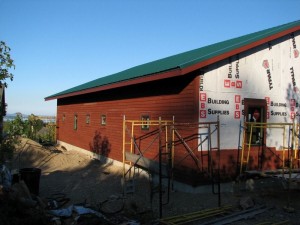
Conflicts on timing arose occasionally between the builder, the earth mover, the chimney mason and the specialist who I contracted to apply an unusual stain finish on the concrete floor. I learned about such glitches when the parties grumbled to me privately. But since they were all locals who knew each other, often from childhood, I figured that they would work things out.
As the fall season arrived, I tested out the new fireplace, a so-called Rumford design based on the old colonial heating hearth, and relatively energy-efficient for an open hearth, then retreated to NY for our last winter in the state. By then I was sufficiently impressed with the building crew to let them finish the interior without oversight. The new house would have no heat but the sun until we moved up the trusty old cast iron kitchen range that had done superb duty for thirty years in the NY farmhouse. The builder, unaccustomed to the heat storage capability of energy efficient design, feared freezing pipes, and moved in a gas heater for the winter. To his amazement, he never had to turn it on, for the house temperature rarely dropped below 60°F.
The carpenters put the finishing touches on the interior by early winter. Photos the builder sent back to us in NY revealed a visually attractive interior with the warm feeling that I had hoped for from ample use of the inexpensive timber resources that dominate the landscapes of the state. We declared the house a success. We had invested our bits of inheritance and savings over the years in more lucrative places than our farming ever yielded. Occasionally these placements did well. We often say that this is the house that Netflix built.
Once installed permanently on the new property in June 2012, and a garden and a brick patio started, we took time to enjoy the view of the water. We also began to encounter the uneven legacy that the previous occupants had left on the property and in relations with the neighbors. New to the vocation of farming, the last occupants had struggled for several years with a steep learning curve before giving up and selling the farm to us. Attempts they had made to outfit the farm as cheaply as possible yielded outbuildings and fencing already in a late stage of deterioration. A grove of nice old apple trees around the gardens had been debarked to within an inch of their lives. The tractor and hay machinery, of far higher quality when new than I had been able to afford in my commercial farming career, showed signs of mistreatment and lack of maintenance. Even in its present state of disrepair, it represented more of an investment than a farm with only 15 acres in fields could justify financially. I had grudgingly accepted it as part of the deal to seal the purchase of the property. From experience with worn out soils in NY, we could see in the varieties of vegetation on these pastures that fertility had not been rebuilt. Worn out soils are typical of abandoned farmland.
Neighbors who came to welcome us regaled us with stories of pigs, goats and chickens free ranging beyond the farm, which immediately confirmed our suspicions about what had damaged our apple trees. Stray chickens had ended their lives roasting on the fires in the adjacent campground, affecting neighbor relations in that sector. Clearly, the welcoming neighbors shared these stories in the hopes that we would do a better job that the previous occupants in keeping our livestock at home.
Property Development
Our general goals for living in Maine had been the same for decades: build a reasonable level of self-sufficiency in food production, water access, and energy capture, and live an active, satisfying life connected to the natural world. For us this meant restoring ecological health and productivity of a landscape worn out from farming that depleted soils, the same sort of ‘farmed out’ land that we had learned to restore while farming in New York state. Because farming had died out decades ago in this part of Maine, farming support services, both human and technical – resources that we had relied on in New York – were not available or far away and more costly. Our retirement income allowed us to afford the costs, but having been raised in the frugal tradition of New England, we were reluctant to invest in a project whose scale – limited by our declining energy with age – promised never to produce enough to financially justify the expense. However, the satisfaction gained from land restoration became its own justification, so we embarked on a project that would not always come up to the standards we knew were necessary.
Over a long period of education in ecosystem science and its application to farming, we had developed a method of holistic management that uses livestock in a key role in a farm understood as an agroecosystem. I have described the design of such a system in Human Designs for Ecosystem Management and Survival After the Oil Era. The most important principle derived from the way natural ecosystems work is to replace, as much as possible, external inputs with ones available within the system. Used holistically, livestock can provide food, fiber, soil fertility and draft animal power. Integrated with other organisms they can improve productivity and general carrying capacity of a farm. I had designed the farm in New York to use livestock in all these ways. On this less ambitious farming project, livestock still provide food and fertility.
Here in Maine, we have 20 acres of open land and 60 acres of forest. On it we manage a handful of sheep grazed in ways that improve soil fertility and forage production and quality. We cut hay for winter feed, build a winter barn manure/bedding pack and compost it, and grow mulch for several gardens. In the gardens we grow two dozen annual food crops and about a dozen perennials. And we cut all our firewood. Our well includes a hand pump, and a new pond ensures water for irrigation and livestock when well water is not enough.
Progress toward our land restoration goals is much slower than on our New York farm, due to the lack of farm services in a region that lost its farmers a couple of generations ago, and our declining energy to contribute farm labor at our retirement age. A key component of soil health and productivity regeneration is calcium, generally deficient in soils in the US Northeast. In actively farmed regions like New York, a phone call brought a truck to spread the necessary tons of lime over the fields. Here, such services are two hours trucking away. However, we soon learned that the local paper mill gives away lime as a byproduct, and we lined up a local trucker to dump the tons necessary to begin restoring calcium levels. We found a couple of old ground driven manure spreaders that we cobbled together into a working machine to pull behind our pick-up truck.
To reduce the lime spreading rate to a level the soil could handle (about 2 tons/acre) we wanted a source of manure to load along with the lime in the spreader. The imported manure would also help jumpstart the soil regeneration. As luck would have it, we discovered that the remaining dairy farmer in the neighborhood would give away his mountain of manure for the cost of trucking. So, for the first two years at least, we were able to economically jump start the process.
Grazing livestock, the other major component of low-cost farmland improvement, was also available locally. One of the rare remaining sheep farmers in the region, was happy to sell us females from his annual lamb crop. They were Katahdins (or at least a cross with that breed), a sheep breed created in Maine by crossing African sheep brought to the Antilles with a British breed, and thus a hair breed, and easier on the back because they shear themselves. Sheep husbandry with a mere handful of grazing animals as implements of land restoration slowed improvement of the open acreage, especially as we favored the gardens over the hay/pasture land with each winter’s bounty of composted manure bedding, but it kept farm labor requirements light in line with our retirement age energies.
The tractor that came with the property, oversized for the size of the farm, helps to dig out the bedding pack and spread the fertility.
But some hand labor is necessary.
A ten-year reckoning
Nearly ten years after the choice to resettle on a small farm in Robbinston, Maine, several thriving gardens produce three dozen fruits and vegetables, and the tiny sheep flock yields a couple of lambs per year for our freezer and several to sell to local customers.
In addition to the attached greenhouse, a cold frame dug into a slope and a free-standing greenhouse extend the growing season into winter on each end.
In the hard times coming, our annual harvest would go far to assure self-sufficiency in food. The main Achilles heel in the system is the machinery – tractor, haying equipment, chain saw, freezers, well pump, etc. – which will function only as long as the industrial economy delivers spare parts. As fossil energy depletes, the wheels are slowly coming off industrial civilization (see my explanations elsewhere). Hence, simpler technology machines and more hand labor will eventually have to replace these current labor-saving devices. One example that we have achieved so far is a pond near the top of the hill to gravity feed water to gardens and sheep as necessary.
In sum, the life we have made for ourselves here is satisfying, consisting of retirement farming, woodlot labor for firewood, continuing research into the ways of the world, pieces of writing like this one and occasional interactions with the natives.
Topics: Agriculture, Northland Sheep Dairy, Memoires, Uncategorized | 1 Comment » |
A holistic view of catabolic collapse
By Karl North | December 8, 2020
“The whole aim of practical politics is to keep the populace alarmed (and hence clamorous to be led to safety) by an endless series of hobgoblins, most of them imaginary.” ~ H.L. Mencken
The graphic view of catabolic collapse as a serpent eating its tail was familiar to the ancients. Descriptions of collapse of industrial society tend to focus on our consumption and depletion of the natural resource base that is essential to its survival. An example is my synopsis of John Michael Greer’s description of catabolic collapse. As a holist however, I see a broader pattern of catabolism, some of whose processes I will describe in this essay.
Holism is a minority perspective and not well understood in an age where power elites have fostered the convenient fiction of a world of independent elements. The emergence of a scientific paradigm due to the initial success of the reductive method provided impetus for the spread of this atomistic thinking. In the reining Reagan/Thatcher worldview, the notion of society itself becomes a mirage – nothing but individuals each pursuing his self-interest.
Therefore, a brief digression may be needed to flesh out the holistic worldview. If we can sweep aside the dominant worldview reinforced under the official narrative, it becomes obvious that we inhabit a universe made up of complex clusters or webs of interacting and interdependent parts. Among humans, arrangements of social obligations knit together societies, however poorly in many cases today. The larger ecosystems we inhabit hold together thanks to intricate webs of mutual assistance that Ugo Bardi has honored with the label “holobionts”. If it were all competition, bloody in tooth and fang as the standard narrative portrays it, our universe would have collapsed long ago. Our greatest need is to gain clues as to how things in our universe change over time. To achieve any such understanding, it is necessary to investigate these complex wholes. Hence, in this essay we will look at how the wholes that make up the structures of modern society – their social, political, economic and cultural forms – change under catabolic collapse.
General considerations: a global view
In the history of the rise and fall of civilizations from the time of the ancient civilizations of the Near East, China and the New World to the present, a universal characteristic is that few of the citizens were aware of their collapse until long after they had begun to fail. Our current Industrial civilization began to fail decades ago, but again, few believe it is happening. The reasons are worth analyzing, in the hope that readers will become aware of the symptoms.
One obscuring circumstance is that different parts of the civilization fail at different times and rates. At the same time a constant narrative of information under elite control paints a distorted picture in the public mind to minimize each new crisis of the system. Because of the obvious relationship between the events and their false portrayal, in this essay I will attempt an integrated analysis that describes the overall effect.
Geographical differences
Geographical differences are due to differences in remaining reserves of energy and other resources, and differences in their rates of use and distribution. Also, the more unrestrained forms of capitalism cause more rapid failure, for several reasons.
Under laissez faire capitalism, a habit of little restraint on extravagant consumption of finite resources leads to early scarcities, with which a public used to seeing discretionary consumption as a necessity cannot cope. At first this can occur both in a core country like the US and at the same time in the nations most open to capitalist plunder of resources. Later in the global decline, an advantage in the less developed countries appears: peasant populations that were least integrated into the global economy, having retained more pre-industrial technologies, can better adapt to the collapse of industrial civilization.[1]
Also, the anything-goes capitalism practiced in the US has allowed the capitalist class to deindustrialize its economy in favor of investment in parts of the world where it can practice unregulated pillage of resources and exploit cheap labor, like Mexico or China. Globalization of the US model has infected US vassal industrial economies as well, starting with Europe and spreading elsewhere. Capitalist financial elites have temporarily mitigated the effects of deindustrialization by artificial means: debt financing of cheap imports from the emerging industrial economies. This cannot last. Revolts against deindustrialization and its effects on the prosperity and economic security of majorities are already occurring in the US and its European vassals.
Finally, a tradition of minimal public intervention makes these economies vulnerable to crises that require a centrally organized response: war, epidemics, environmental disasters or sudden financial collapse, for example.
While capital flight occurs in the mature industrial economies, emerging industrial economies – principally China and allied economies like Russia, Iran, possibly India and the East Asian economies – continue to experience growth for a time as long as markets remain strong for their products and natural resources remain. These countries are creating a multipolar counterweight against the declining unipolar system led by the US. As insurance against a failing US-led global system, they are building domestic markets and creating alternate international currency and financial transaction institutions to replace the ones previously dominated by Western global capitalists. Economic growth in the multipolar group is also affected by declining natural resources and is therefore temporary. Economies with less access to such resources, especially fossil energy, will experience degrowth soonest, as described below.
All the emerging economies have strong private sectors, including state-run sectors that act like capitalist businesses. China, for example, has state-controlled corporations of global stature that sell shares on stock markets and borrow from private banks. However, they typically have strong traditions of public oversight and economic planning that often give them an advantage over laissez-faire economies.
Differences in remaining reserves of resources
Russia has the largest land base and a large reserve of fossil fuels, minerals and forest. China is now on track to become the largest industrial economy by the end of the decade. The present economic alliance between China, Russia and others in the multipolar group has the potential to continue economic growth much longer than the rest of the world. On the other hand, the mature industrial economies – US, Europe, and Japan – having depleted much of their domestic resource base, have become increasingly reliant on imperial client states for resources. As these economies weaken due to deindustrialization, they will lose the capacity to control client states. Western elites are currently trying to maintain and even extend their hegemony with color revolutions and economic warfare they call “sanctions” in recalcitrant states. As the domestic economies of the Western imperialist states weaken, these efforts are gradually stalling out and the area of control of the Western Empire is shrinking. The global picture, therefore, is one of countries responding at different rates and times to a general situation of declining net energy.
Degrowth in the United States
Domestic oil production reached an all-time peak in 1970, as oil geologist King Hubert had predicted over a decade earlier. Control over the world oil price shifted to a consortium of foreign producers. People in the US began to experience degrowth in the 1970s due to rising energy costs and the resultant inflation, but most saw it as a temporary setback. Indeed, inflation stabilized with the dropping world oil price in the 1980s, and in conjunction with an economic ‘house cleaning’ forced by high interest rates, served to revive the economy. This mitigated the effects of deindustrialization that occurred as China opened up lucrative investment opportunities for Western capital (in exchange for massive transfer of technology rights).
However, the flight of heavy industry to the Asian Pacific rim and the Asian conquest of the US auto industry had created a permanent ‘rust belt’ in the center of the country. The Reagan – Bush – Clinton policies of the 1980s and 1990s transferred the tax burden downward and eroded the social safety net, and by the 2000s incessantly rising energy costs caused the brief return of prosperity to evaporate. The ruling elites used government policy to artificially prop up the economy, or at least a semblance of it.
Infrastructures
To meet daily necessities in an age of economic decline, resources once used to maintain infrastructures in the face of 2nd Law entropy can be diverted for a time. A farmer facing bankruptcy typically lets buildings and equipment gradually wear out, and thus puts off the inevitable. Likewise, in the whole country, the dilapidation of infrastructures – highways and bridges, and utilities like water, sanitation and electric grid has been going on for some time. Seen in conjunction with the decades-long export of heavy industry on the part of the investor elite, the very industrial capacity of our society may be permanently lost, weakening the nation in its foreign relations. For example, in a recent report to Congress, the Pentagon acknowledged that the US no longer had the capacity to wage a major war. Not only the industrial plant but the engineering skills were now deficient, incapable of a rapid buildup in the weapons industry such as was possible in WWII.
In another attempt to mitigate the loss of prosperity, financial elites have created a discount consumer economy of Walmarts, Kmarts and Dollar Stores to flood the US market with cheap imports from the industries they previously exported to cheap labor regions. They hide the drop in quality behind brand names of products once made in America.
The economic decline prompted another government intervention: cheap credit. One effect of virtually unlimited usury – the standard tool of socialism for the rich – was to accelerate the concentration of wealth at the top. Another was to artificially inflate stock markets and create financial bubbles – overheated sectors like real estate or non-viable industries like hydrofracked oil, which sustained a false perception of prosperity. The saturation and eventual abuse of credit spawned exploding credit bubbles and threw the financial sector into crisis, which the government parried initially with bailouts and eventually by steady money printing. The ultimate result will be the loss of the reserve status of the dollar, thus a dead-end street, propped up for now only by the global perception of the dollar as a safe haven for stored wealth. The weakening of the dollar currency and gradual loss of its reserve status will have several ripple effects, some of which are already beginning to occur. It will raise the cost of all imports, whatever their quality, and cause a further decline in prosperity. The US will lose its ability to use the dollar reserve currency as a weapon of political and economic control in client states of the empire. Thus the end of cheap energy and raw materials that began to bite decades ago has created a cascade of accelerating unexpected consequences, for which there is no solution.
Disaster Capitalism
As ruling powers discovered that they could control a society more easily by indoctrination than by force, and when electronic media were invented that could easily spread a potent message, they developed sophisticated narratives that worked wonders of manipulation and eventually created a fictional reality in the public mind. This means of social control has worked for a century, but began to lose traction as policies described above of cheap credit and war spending failed to revive the economy. As a result, ruling elites have used their control of media to distract from the failing economy by manufacturing mythical threats and engineering catastrophes – a kind of disaster capitalism – which they then use to fabricate episodes of fear. They use the climate of fear to justify wars and other policies that serve their interests.
Engineered fear attacks in the Western world started off in high gear at least 70 years ago with Cold War ideology, an attempt to manufacture the threat that ‘The Ruskies are Coming!’, when the real fear, in the hearts of our rulers, was that the idea of an alternative to capitalist wage slavery and debt peonage might spread. The McCarthy witch hunt was the great enabler. Added to that was the fabrication of a ChiCom threat starting in 1949, rather amusing, since for decades neither China or the West would have any truck with the other. With the demise of the USSR and the rise of partially secularized Muslim states taking increased control over their oil, the elite’s story tellers produced a scare detonated nicely by 9/11: the Great War on Terror. Then, with the success of the Trump campaign in 2016 it suddenly became the War on Populism, with Trump and his deplorables as the resurrection of Hitler. These days it’s a virus, one of allegedly over 150 floating around in the Corona category that cause seasonal epidemics, a convenient scapegoat for a collapsing economy.
The discredit of institutions
The growth of a population rebellious enough to support an unpredictable presidency like the Trump administration is evidence that disaster capitalism is not working anymore as a pacification strategy amidst growing economic insecurity and real poverty. Not limited to the US, revolt has spread throughout Western Europe, taking different forms – yellow vest movement in France, Brexit in the UK, renaissance of the radical right in Germany, and a general revolt against the anti-virus lockdown policies in most of Western Europe.
While ruling elites still manage to control government policy, their real challenge and fear is the growing revolt, which promises to continue regardless of the party in power. In the US, deep state operatives surrounded a politically inexperienced president and manipulated him into obedience. But they could not silence his speechifying or quell his ability to capture media time and stay in the public eye. Trump’s real threat was to voice criticism of the neoliberal system itself that, whether sincere or simply pandering to his base, few leaders since JFK had done, and thus gave direction and strength to a rebellion that had been weak and incoherent.
Elite reaction was to openly weaponize the mainstream media and the Democrat Party to take down the Trump administration. Never more than a propaganda arm of the ruling class, most of the media has thrown away all pretense of objectivity. In its attack on the working class base of the Trump presidency, the Democrat Party lost any façade of progressive liberalism that it previously enjoyed. These institutional losses of credibility further fuel the atmosphere of revolt in a vicious circle, a loss of credibility that promises to be long lasting.
Conclusion
The catabolic symbol of the snake eating its tail finds expression in all major institutions of a civilization that is experiencing the beginning of degrowth. It entails the erosion of cover stories like ‘free press’, ‘democracy’ ‘academic freedom’ ‘nonintervention’ and ‘sovereignty’. The Western ideal of liberalism itself is tarnished as self-proclaimed liberals openly embrace censorship and disregard for the rule of law at home and unauthorized wars abroad. Government and banker collusion to play tricks with monetary policy, foster unlimited usury and replace a real wealth economy with a speculative, debt economy is destroying the trust in money itself.
Perhaps the present state of affairs is best understood when placed in a larger historical context. Anthropologist David Graeber and political economist Michael Hudson think and write history in the holistic style of Spengler and Weber and the world systems school that uncovers patterns of civilizational change over la longue durée. More specifically, unlike much economics and political science today that caters to the ideological needs of ruling elites, they consider that the study of the production and distribution of wealth cannot be adequately understood apart from the study of the distribution and exercise of decision-making power. Their approach follows that of the early political economists like Adam Smith, Mill, Ricardo, Marx and even Locke and Hobbes.
Each seeing the subject from his own angle, Graeber and Hudson present a broad historical panorama of civilizations struggling with alternating conceptions of economic life and the morality of how social relations regarding obligations of exchange, credit and debt are handled.[2] Whenever the morality of exchange is characterized by a generalized sense of obligation based on favors owed (as in most families or healthy neighborhood community – which Marcel Mauss called a gift economy) or, at a larger social scale, custom or law regulate obligations according to status in a social hierarchy (as is the feudal hierarchy of the Middle Ages), inequality is relatively limited and is conducive to social peace. But they find that whenever the morality of economic relations is reduced to precise calculation, debt and usury are allowed free reign, and market values come to reign supreme, then endlessly rising inequality, eventual slavery of various sorts (including wage slavery and debt peonage), war, and civilizational collapse eventually follow, sometimes temporarily relieved by Jubilees, which erase indebtedness. They see the modern age, dating from the end of feudalism, as one dominated by the latter conception. If the modern age, as it crumbles, is to give way to something new, it will need a different moral basis of how humanity manages economic relations and the obligations that creates.
At the present historical juncture, where a nearly global form of civilization appears to be experiencing some sort of tipping point, the Graeber and Hudson studies are timely. Covering several millennia and forms of civilization from ancient China to modern Western Europe and North America, they record an array of attempts to deal with the definition of debt and obligation in social organization, which they see as central to the form a civilization takes. As such, they offer a range of possible futures to think about at a time when much thinking about these questions runs in narrow channels based on false assumptions.
[1] The Peasants Shall Inherit the Earth
[2] Graeber, David. 2014. Debt, the first five thousand years.
Hudson, Michael. 2018 …and forgive them their debts: Lending, Foreclosure and Redemption From Bronze Age Finance to the Jubilee Year.
Topics: Political and Economic Organization, Social Futures, Peak Oil, Relocalization, Uncategorized | No Comments » |
Scenarios of Degrowth
By Karl North | November 25, 2020
Prosperity in the Western world (aka the American Way of Life) has been in decline for decades, and no government since Nixon has done anything significant about it. Nor could they, in the long run. As any oil geologist knows, it is all about the end of cheap energy. All policies attempted simply to kick the can down the road. Or to lay false blame.
A useful scenario of the mechanics of degrowth based on the end of cheap energy is the latest piece from Tim Morgan, https://surplusenergyeconomics.wordpress.com/2020/11/23/185-the-objective-economy-part-two/. He shows how our consumption priorities shape a scenario of degrowth. A synopsis follows:
- Consumption has been “living on the life-support of financial manipulation”.
- As indebtedness reaches a saturation point, financial manipulation fails. Consumption declines.
- Degrowth in consumption starts with discretionary consumption.
- This depresses the whole sector of the economy that fuels discretionary consumption.
- The destruction of demand for debt follows the destruction of demand for discretionary consumption. Consumption declines further.
- All economic sectors dependent on consumption decline.
- This reduces income, lowering consumption further.
This suggests a model structured as a positive feedback loop or two. All variables in a positive feedback loop experience exponential growth. Of course, in any complex situation, negative feedbacks exist that can counteract exponential growth. In my view however, something like the following positive feedback loops are currently dominant.
Topics: Social Futures, Peak Oil, Relocalization, Uncategorized | No Comments » |
The quality of peasant life: a scenario for survival
By Karl North | November 17, 2020
Histories of peasant life that characterize it as nasty, brutish and short ignore the vast variety around the world of peasant quality of life and attendant differences in environment, social organization and culture. Differences of degree of overlordship alone range from several layers of overlords to complete autonomy. It is just this great variety, the fruit of adaptation to site-specific conditions, that offers peasant communities that retain elements of subsistence agriculture the chance to survive the demise of industrial civilization. For those who do not turn up their nose at learning a little social science, let me offer a synopsis of one case as an example: the Albigensian or Cathar heresy that emerged in late medieval southern France.
Conventional history of the phenomenon focuses almost exclusively on the religious doctrinal differences and the northern crusade that eventually crushed the renegade movement. However, as any anthropologist knows, religious divisions are often a signal for underlying differences of a cultural nature. In the late Middle Age, society in the south of France retained much of the richness and sophistication of the Roman Empire, whose eclectic mix of cultural beliefs from around the Mediterranean and beyond never penetrated deeply into the north. Thus, southern France was a natural breeding ground of deviance from the stark doctrines of the Church. It was not a coincidence that the core of the Albigensian movement was in Toulouse, on an old trade route between the Mediterranean and the Atlantic, and close to the foothills and mountains of the Pyrenees. Mountain people have often been hard to govern, and the Pyrenees provided both a breeding ground of heretics and a safe retreat as the crusade heated up. As we shall see, the difficulties of terrain, the distance from centers of power, and the inviting presence of the Spanish border allowed the peasantry in mountain villages to gain considerable autonomy.
The French peasantry experienced three layers of formal overlordship – King, Church and nobility. But in the 12th and 13th centuries the royalty and nobility, which the Church relied on to carry out its crusade against the renegades, were not as strong as they became later. Moreover, many of the southern nobility were “infected” with the heresy, and first had to be brought back “to the fold” to be of any use in the crusade. The aristocracy often had trouble even extracting its tribute from villages located in its mountain lands; so stamping out the heretics in those places was often the least of their problems of governance.
In the Pyrenees, agrarian peasant villagers practiced mixed horticulture centered on livestock. As in many pastoral systems, the herd/flock is the savings bank; it is the source of wealth for trade and is included in the census of the population for taxation purposes. Villagers employed herders who managed flocks of many families and ranged far and wide, even across the border into Spain, moving flocks to higher altitude and back in the seasonal migration cycle – the transhumance. Villagers had relationships with traders and others in market towns in the lowlands on both sides of the border. Nobles rarely went up into the mountains, but governed indirectly through village headmen. So it was easy to hide flocks to avoid the tax count, and to trade on which side of the border best escaped the tax man. Relations in market towns would provide cover for trade deals that might be too revealing of wealth.
In the mountains, the ministry was often provided by circuit rider priests. Preachers of the heresy were often informal or defrocked priests who could hide in extended families, convert a whole village, and as the heresy hot spot became known to the authorities, escape to another village on the circuit, or cross the border if necessary.
These brief remarks that evidence considerable religious and political-economic autonomy barely graze the surface of the various freedoms from overlordship and the resultant quality of life that the mountain peasantry enjoyed. The primary source for further education on these matters is Montaillou: The world-famous portrait of life in a medieval millage by anthropologist Emmanuel Le Roy Ladurie. It is actually a portrait of the mountain peasantry and its lowland political, economic and religious relations in the whole region. Montaillou was the last village that actively supported the heresy, becoming the center of a revival nearly a century after the Church and its minions had crushed it elsewhere in France. This anthropologic work reveals that behind the religious autonomy a mountain peasantry had created a niche of more general self-sufficiency and self-rule that was political, economic and cultural, which protected it to a surprising degree from external forces of all kinds.
These two historical examples, from the Pyrenees and Bali, offer food for thought on the question of what forms of social organization and ecological integration will ensure the survival of the peasantry of the future.
Topics: Agriculture, Northland Sheep Dairy, Political and Economic Organization, Social Futures, Peak Oil, Relocalization, Sustainability Assessment Tools, Uncategorized | No Comments » |
The Orange Revolution Comes Home to Roost?
By Karl North | August 30, 2020
The orange revolution, sometimes labeled simply ‘color revolution’, is a project of the Central Intelligence Agency (CIA), an organization set up to facilitate the penetration of Western private capital in every part of the world.[1] As such, one of the tasks of the CIA is to destroy revolts against compliant governments, and to destabilize and eventually overthrow governments that resist Western imperial penetration in any way. The orange revolution is one of the CIA projects designed to achieve these goals. This essay explores the thesis that the current violence in the US against property and police, piggy-backed on the Black Lives Matter (BLM) demonstrations, is an attempt at an orange revolution.
The orange revolution is rooted in attempts to block anti-capitalist movements in Western Europe spawned by the crisis of capitalist economies in the 1930s and just after WWII. The first attempt was called Operation Gladio, which carried out assassinations of conservative political leaders in Italy and blamed them on the leftist parties, successfully decimating the Italian left.[2] The success of Operation Gladio led the CIA to expand it into a diversity of subversive Cold War operations in Europe and other parts of the world.[3]
Attempts to overthrow governments in Eastern Europe after the fall of the USSR, in Afghanistan in the 1980s, and more recently in the Arab world became known as orange revolutions. One of their trademarks is to piggyback violent extremist groups on peaceful protest demonstrations, to destabilize and spearhead the overthrow of elected governments. If this goal is not achieved, the back-up plan is to split a nation into separate parts and thus facilitate eventual capitalist penetration. Examples to date are Yugoslavia, Georgia, Ukraine, Afghanistan, Libya and Syria. The risk of blowback in the use of extremists has led to loss of control in all these cases and others as well. As we will see, if there is an attempt to foment a US orange revolution against the current Trump administration, the same loss of control is occurring.
When the candidate of the ruling elites failed to capture the US presidency in 2016, they managed to harass the winner into continuing to follow their chosen foreign policies. The elite controlled mainstream media (MSM) , always a tool of mass deception, was ramped up to become the weapon of the opposing Democratic Party in a series of attempts to impeach the president, using false evidence. This succeeded in keeping the sitting administration off balance and more or less subservient to ruling class interests, but the president, emotionally unstable and incompetent to govern but expert at playing the MSM, remained a loose cannon. As the next election approached, the death of a black man at the hands of the police provided an opportunity to block the re-election of the Trump administration, or at least cause enough destruction of the social order to justify imposition of martial law.
Heavily funded by US corporations[4] and George Soros[5], the sponsor of orange revolution projects in Europe, the BLM umbrella organization fielded demonstrations around the nation against racist police violence. The MSM went into attack mode, encouraging the budding protest, and focusing on the peaceful demonstrations while minimizing reportage of the widespread violence to commercial and government property. The extremist fringe of white liberalism piggybacked on the demonstrations against racism, calling for revolution, trashing commercial property, pulling down statues of historical figures, and using the peaceful demonstrations as a cover for violent attacks on police stations, federal buildings and other symbols of law and order. Democratic politicians at city and state level supported the violence by allowing activists to declare “police-free zones”[6] and making vague calls for defunding the police. All this occurred against the backdrop of a collapsing economy and an out of control virus epidemic that is accelerating the collapse. Conditions are building that might support an insurrection.
What are the indications from these events that a budding orange revolution is taking place in the US? The CIA playbook of orange revolutions in other countries has sought regime change, or barring that, weakening states so that they partition into mini-fiefdoms that transnational capital can more easily manipulate. In the US, no highly organized movement with popular support exists on which to graft a violent, extremist spearhead such as occurred, for example, in Afghanistan, Syria, or the former Yugoslavia. US ruling elites have seized on BLM as pawns in an effort to discredit the Trump administration, using the MSM and the Democratic Party to magnify its effect, but much of the white working class and even parts of lower class minorities are either politically hostile to BLM, or are reacting negatively to the effects of the protest demonstrations across the country, as the following synopsis of investigative reporting will show.
Investigative reporter Michael Tracey crisscrossed the country talking to residents of neighborhoods trashed by extremist activists. His long interview and photo essay reveals interesting patterns that suggest a situation out of control from the perspective of orange revolution goals.[7] Tracey found that most of the destruction of commercial property occurred in low income neighborhoods, often to businesses owned by minorities residing in those neighborhoods. Local residents reported that the riot damage aggravated a local economic situation already in crisis. Tracey discovered a common pattern across the country where according to locals interviewed, mostly white activists from outside the neighborhoods carried out the initial destruction. Then, profiting from the weakened police protection, low income locals looted the trashed businesses. Interviews show that, far from supporting the demonstrations, local residents deplored the destruction and the lack of police protection. Many locally owned businesses had to put up “black owned” or “minority owned” signs to protect them from rioters:
Anecdotally, a retired academic friend in Minneapolis, one of the hardest hit cities, reports that due to the absence of police protection, burglars have initiated a crime wave in his upper middle class residential district. It shows how far the breakdown of law and order can spread.
If the immediate goal was to provoke a reaction from the Trump administration that could potentially be used against him in the electoral campaign, it succeeded. Federal agents were deployed, both overtly and covertly, to fight rioters in cities where local police had been enfeebled by BLM anti-police demonstrations backed by local authorities. But apart from an enraged outcry in the MSM, supported by liberals from neighborhoods not hurt by the violence, much of the lower income populace, including minorities, seems to support law and order more than they deplore police violence. This could work in favor of a Trump administration victory in November. To the extent that a BLM orchestrated uprising has gotten out of control and could backfire in the short run, it fits the pattern of blowback that has characterized orange revolutions elsewhere.
A long-term strategy of ruling elites has been divide-and-rule: in the case of the US to polarize the country racially or ethnically. The secondary goal is to divert attention from the deepening economic crisis caused by de-industrialization and by an underlying predicament: the depletion of the industrial resource base worldwide. If the immediate goal is to provoke enough disorder to justify a martial law or police state solution, that may succeed, but in ways that are impossible to predict, given the loss of control of the current unrest. One likely result, the US descending into a civil war, might backfire against a ruling class that needs a state sufficiently in control to continue funding the military industrial complex that defends financial class investments in the imperial periphery.
In conclusion, the success of ruling elites at polarizing the country and diverting attention from its deepening class warfare ironically make the success of a putative orange revolution hard to achieve in the short run. However, one characteristic of the CIA orange revolution playbook is a long gestation period of hybrid warfare leading up to a coup d’état intended to achieve its goals. The use of the BLM may be a trial balloon to develop strategy for the long haul.
[1] Prouty, L. Fletcher, The Secret Team: The CIA and its Allies in Control of the United States and the World. Prouty is a former CIA officer who held a key position in the organization.
[2] Williams, Paul L., Operation Gladio: The Unholy Alliance between the Vatican, the CIA, and the Mafia.
[3] Cottrell, Richard, Gladii, NATO’s Dagger at the Heart of Europe: The Pentagon-Nazi-Mafia Terror Axis.
[4] Corporate America Pledges $1.7 Billion to Black Lives Matter
[5] https://www.nytimes.com/2020/07/13/us/politics/george-soros-racial-justice-organizations.html
http://www.informationliberation.com/?id=61533
[6] https://townhall.com/tipsheet/mattvespa/2020/07/31/insane-seattle-moves-to-abolish-police-force-n2573513
[7] https://medium.com/@mtracey/two-months-since-the-riots-and-still-no-national-conversation-12a7e3e4e006
Topics: Political and Economic Organization, Uncategorized | No Comments » |
